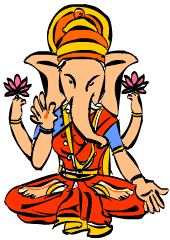It’s on a hill called Harshparvat beside a sleepy village, Harshgaon, near Sikar in Rajasthan. The uphill drive, or if you like climbing rocks, the trudge uphill, to see the remains of the beautiful Bhairavnath temple is certainly worth it.

Poetry in Stone [Illustration by Shinod AP]
The exquisitely carved stone temple, which was apparently demolished by the Mughal emperor Aurangzeb in the 17th century, stands in solitary splendour on the top. Harshparvat is largely uninhabited and does not have many modern structures around, except the power transformer unit at the beginning of the road to the temple.
The remains of the temple, most of which are finely carved stone, have been put together by the locals to create some semblance of the original structure. But a lot of them are placed at random, upside down or on their sides. So your children can have a lot of exercise as they bend down or sideways to see these beautiful figurines frozen in stone.
The sanctum sanctorum is sheer poetry – poetry in stone. It has life-sized figures of apsaras on the walls which look like they are about to break into a dance recital. And some of them have intricate tattoos on their thighs to substitute for jewellery.
The original deity, Bhairavnath, does not exist in the sanctum sanctorum anymore. The lone priest tells you, the deities were carried away to a cave nearby to save them from Aurangzeb’s wrath.
One wonders though why Aurangzeb would have bothered to leave his capital to come to this remote place to break a temple, however beautiful it may have been.
The priest then leads you to a cave to show you the deities. There are three of them and they remind you of the trinity in Puri, Orissa, though there is a major difference in their identities. The Puri deities are Vaishnavite, while this is a Shiva temple. But that is a mystery that you have to figure out when you visit the place.
And as you bend your neck to come out of the cave, you come face to face with an image of Ganesha. But surprisingly, the image is that of a woman with an elephant trunk and you wonder whether the sculptor made a mistake. The priest tells you that is the way it was meant to be. That’s another mystery to be solved.
Reaching Harshparvat is easy. Take a bus or train or drive west from Jaipur to reach Sikar. It takes about three hours. At Sikar, you can either hire a tempo or cab if you do not have a vehicle and land in Harshgaon in half an hour. After you’ve reached Harshgaon, you cannot miss Harshparvat.
The locals will tell you that it’s just a four-kilometre walk up. Ask them which one. For, there are actually two ways of going up. One is a 10-kilometre long motorable road, the other merely a jungle path up the hill which could be about four kilometres. If you are travelling with children, it might not be a nice idea to walk up because the stone path is quite mossy, and therefore slippery at places. Though it is otherwise quite a beautiful experience.










